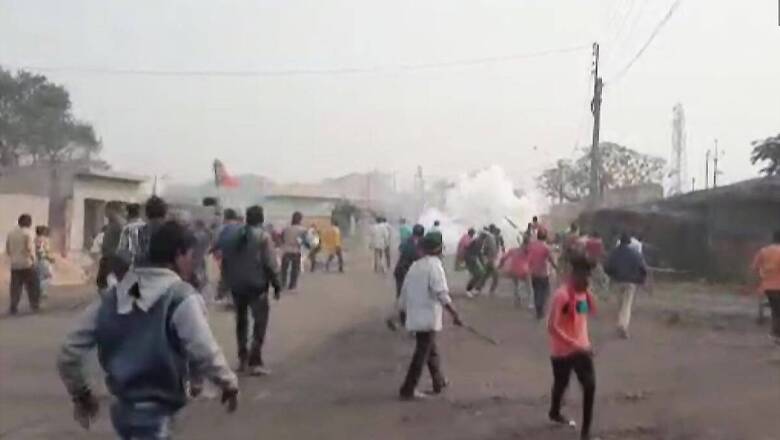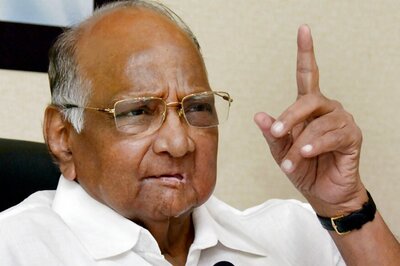
views
In 1997, the government of West Bengal admitted on record in the state assembly that 28,000 political murders had been committed in the state since the Left Front came to power in 1977. This works out to roughly 1,400 political murders a year. Or four murders a day, every day for twenty years straight. And those are just the official figures.
This is an astounding number. It should have led to shock and grief across the state and the nation. It did not even lead to surprise. This number should have ended political careers. It did not even make a dent. Then chief minister Jyoti Basu continued to ride high. People would remember how a year earlier in 1996, the United Front coalition had even offered Basu the post of Prime Minister. The state home minister who placed this data point on record in the assembly was Buddhadeb Bhattacharjee, who later succeeded Basu as chief minister.
There is a story there, beginning from the killing fields of Bengal in the 1960s and 70s and raging till the present day. A place where the vice-chancellor of Jadavpur University was shot dead in broad daylight and nobody ever found out who did it. Across the bloodlands, fables of horror and killing abound: the gruesome Sainbari murders, Marichjhapi massacre, Kalimpong massacre, Nanoor massacre and many more. As a child, I made several trips to my grandmother’s home in south Kolkata. Little did I know that across from the street, on one of the busiest thoroughfares in the city, 17 people had once been burned alive. This was the Bijon Setu massacre of Ananda Margis. Not a single arrest was ever made.
As late as 2018, West Bengal led the nation in political murders. Where is the data for 2019 or 2020? We don’t know, because the state government has refused to report it to the NCRB. What we do know is that there is now a shocking level of tolerance, even acceptance, towards violence as a core aspect of political life. As the state heads to polls, the buzzword among common people is khela (or game), a not so veiled allusion to the ‘boys’ bracing for a fight. The other buzzword is boma (or bomb).
How has India’s longest continuing nightmare of political violence been flying so smoothly under the ‘national’ radar? Undoubtedly, the political inclinations of a section of the commentariat have played a role. In the 2018 panchayat elections, there were no opposition candidates in over a third of the total seats. This is unusual. This is terrifying. But the sections that talk about “death of democracy” or scream “human rights violation” whenever Delhi Police uses water cannons are always oddly silent about Bengal.
Why do Bengal and Kerala stand out nationally in terms of political violence? Which political element is common to the landscape of these states? Who knows? The current Bengal CM is certainly right about one thing. In absolute numbers, the political violence has come down from the days of Left rule. She would know. As an opposition leader in 1993, she had led a march to what used to be the state secretariat at Writers’ Building in Kolkata. The state police opened fire and gunned down 13 protesters. Mamata Banerjee herself suffered an injury during the incident. So while the violence is down in terms of historical perspective, it is still unconscionably high for any modern democratic society.
There are three elements that need to be removed from the political culture of Bengal. The first of these is violence. Not just the violence itself but the tolerance for it needs to come to an end. Nothing good has ever come from the manufacture of crude bombs across the countryside as well as from unemployed youths baying for each other’s blood in the name of ‘ideology.’ Last year, some 39,000 detonators were seized from a truck in Birbhum, enough perhaps for a small army. This is unusual; it must be seen as such and it needs to be called out.
The second element is a deep-seated elitism. For far too long, the state and its politics have been too closely identified with a certain coterie around Kolkata, the so-called bhadralok. Only their impressions seem to matter. The rest of the state; in particular, the tribal regions such as Purulia and Midnapore are often missing from the conversation. The areas around Siliguri and Darjeeling and generally speaking, any area north of the Farakka barrage is often forgotten altogether, along with its indigenous language and culture. Obviously, there is a disturbing class and caste dimension to this systemic exclusion. While overt caste politics in Bengal is rare, hardly any other state has such a political monopoly of upper castes. This is another of the problematic legacies of Left rule in Bengal. The dominant castes neutralised all movements for social justice, without actually devolving any of their own power to other sections of society.
The third element is relatively new; a palpable fear of the “outsider”. Or bohiragoto, as is the word in high Bengali. A side effect of bhadralok elitism, it began with a cultural distaste towards Marwari communities who had settled in Kolkata (and had been creating wealth in the city for generations). It was soon extended to labourers coming in from Jharkhand and Bihar. They were “accused” of speaking Hindi and bringing with them outside influences, whatever that means. This rhetoric has now gone so far as to draw lines between worshipping Durga and worshipping Ram. Things are so out of control that in 2019, the chief minister referred to protesting junior doctors at NRS Medical College Hospital in Kolkata as bohiragoto (outsiders). The paranoia must come to an end before it consumes everyone.
Every election brings with it new hopes and new possibilities.
The author is a mathematician, columnist and author. Views expressed are personal.
Read all the Latest News, Breaking News and Coronavirus News here



















Comments
0 comment